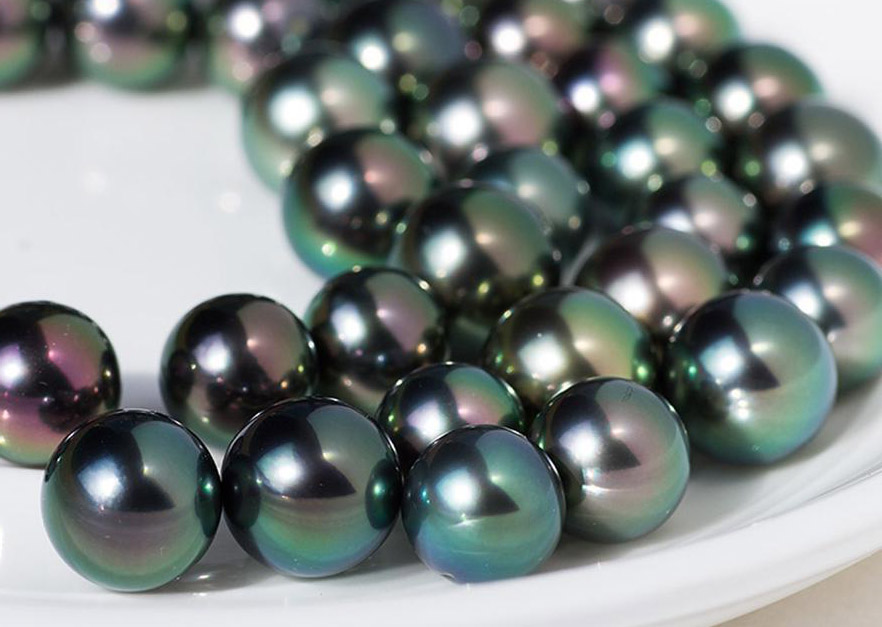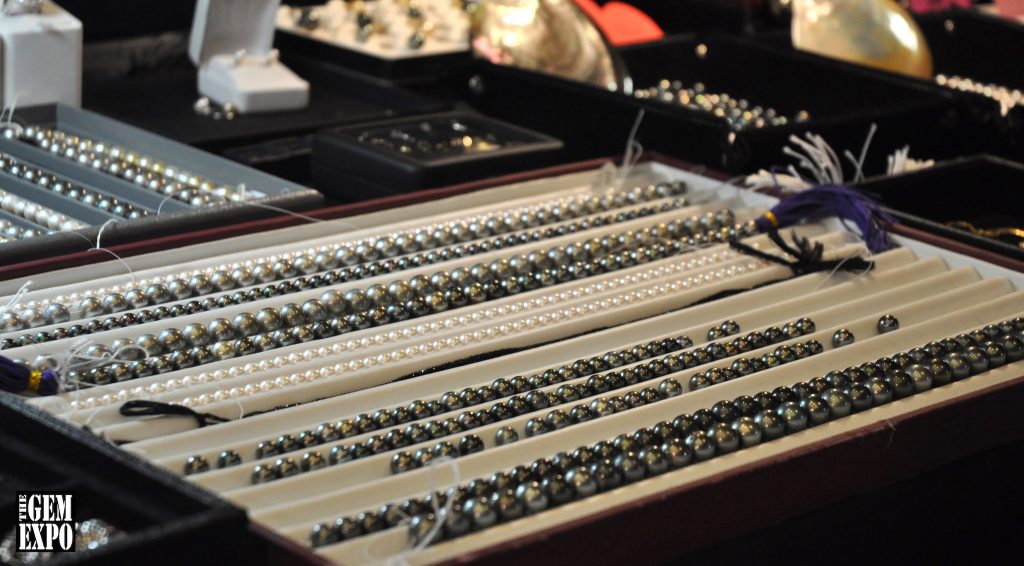
The origin of these dark and exotic pearls is from the Black-lip oyster that defines them as Tahitian Pearls. Although people can recognize these pearls through their deep, dark and penetrating black colour, they have a remarkable colour spectrum. Thus, the colours range from white, creamy, grey, regal green to shimmering peacock colours to black. In the world of pearls, these exotic deep black ones are considered as novices as they stepped in the mid of 19th century, through the struggles of Mr. Robert Wan from Tahiti and his associates from New York.
In contrast to the typical pearls that have relatively light and sublime colour, the Tahitian pearls have deep colour naturally. For this purpose, these pearls, upon their entry, became highly popular, the ones that are largely sought and subsequently one of the expensive jewellery adornments in the world.

Furthermore, as these pearls are present in an extensive colour range, in a finishing strand, finding all of the matching Tahitian pearls is a difficult job. It is because thousands of pearls are required to design a single strand only.
These pearls mesmerize the people to the thoughts of deep tropical water, oscillating palm trees and the good men who have gone crazy in search for them.
How do the Tahitian pearls stand out from the other pearls?
Across the world, these Tahitian pearls have gained enough popularity that they are now the second most costly commercially farmed pearls in the world. Furthermore, to our astonishment, these pearls are not actually grown or farmed in Tahiti. Instead, they are farmed in French Polynesia that is the assemblage of five island archipelagos whose area is expansive enough to cover the whole of Europe.
Moreover, in contrast to the black water Akola pearls that have been dyed to get the black colour, the colour of the Tahitian pearls are naturally black. Also, in comparison to the Akola pearls, the Tahitian pearls are grown through the insertion of small rounded bead body into a potential pearl sac of a freshwater mussel or marine pearl oyster. These pearls also have a thin nacre and according to the export law by Fresh Polynesia, the size of the nacre should be 0.8mm for these Tahitian pearls.

How exquisite and rare are these pearls now?
As these Tahitian pearls are bead-nucleated, the primary shape of these pearls is round. Therefore in an ornamental way, these pearls can fashion as drops and circles in a necklace, ring or earrings. Moreover, in the early times, when these pearls stepped in the market, they were highly valuable and rare. At present, they are still considered more valuable than the Akoya pearls, but now their farming is becoming increasingly widespread over a demographic area. If we see that a decade ago, a single strand of these Tahitian pearls could be purchased for $100,000, but in the present times, these pearls are now available prices ranging from $2 to $5000 depending on quality and size.
Written by: The Gem Expo
https://TheGemExpo.com
#gemstoneblog #tahitianpearl #blackpearl #pearls #thegemexpo




